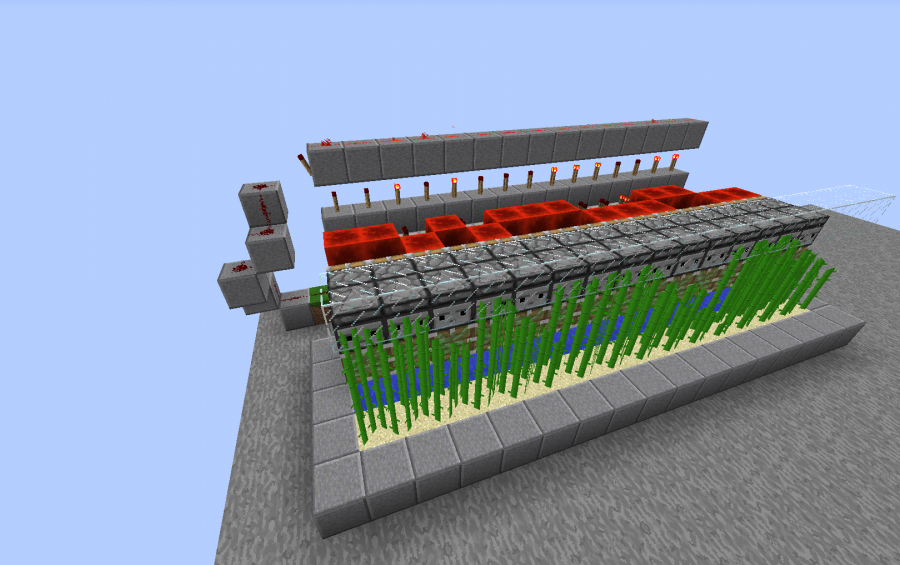

Otto R, Silva AP, Franco HCJ, Oliveira ECA, Trivelin PCO (2011) High soil penetration resistance reduces sugarcane root system development. Otto R, Trivelin PCO, Franco HCJ, Faroni CE, Vitti AC (2009b) Root system distribution of sugar cane related to nitrogen fertilization, evaluated by two methods: monolith and probes. Otto R, Franco HCJ, Faroni CE, Vitti AC, Trivelin PCO (2009a) Fitomassa de raízes e da parte aérea da cana-de-açúcar relacionada à adubação nitrogenada de plantio. Oliveira EL, Andrade LAB, Faria MA, Evangelista AWP, Morais AR (2009) Uso de vinhaça de alambique e nitrogênio em cana-de-açúcar irrigada e não irrigada. Lynch J (1995) Root architecture and plant productivity. Köppen W, Geiger R (1928) Klimate der Erde.

Automatic sugarcane farm 1.10 iso#
ISO - International Sugar Organization (2013). Responses in fumigated and non-fumigated soil. Garside AL, Bell MJ (2009) Row spacing and planting density effects on the growth and yield of sugarcane. Strategies for the adoption of controlled traffic. Garside AL, Bell MJ, Robotham BG (2009) Row spacing and planting density effects on the growth and yield of sugarcane. Galvani E, Barbiere V, Pereira AB, Villa Nova NA (1997) Efeitos de diferentes espaçamentos entre sulcos na produtividade agrícola da cana-de-açúcar ( Saccharum spp.) Sci Agric 54(1–2):62–68. įaroni CE, Trivelin PCO (2006) Quantificação de raízes metabolicamente ativas de cana-de-açúcar. ĭias FLF, Mazza JA, Matsuoka S, Perecin D, Maule RF (1999) Produtividade da cana-de-açúcar em relação a clima e solos da região noroeste do Estado de São Paulo. Biosci J 30:390–400ĭevi TC, Lakshmi MB, Naidu NV (2005) Response of new sugarcane genotypes to wide row spacing.

Consecana-SP, Brasilĭalchiavon F, Carvalho MP, Montanari R, Andreotti M, Panosso AR (2014) Produtividade da cana-de-açúcar: variabilidade linear e espacial entre componentes tecnológicos e da produção. Jaboticabal: Funep, BrasilĬonsecana (2003) Conselho dos produtores de cana-de-açúcar, açúcar e álcool do estado de São Paulo.

Ĭasagrande AA (1991) Tópicos de morfologia e fisiologia da cana-de-açúcar. īull TA (1975) Row spacing and potential productivity in sugarcane. īraunack MV, McGarry D (2006) Traffic control and tillage strategies for harvesting and planting of sugarcane ( Saccharum officinarum) in Australia. Proceedings, 4rd Congresso Nacional da Stab, November 8–13, Olinda, PE, 23–27īraunack MV, Arvidsson J, Håkansson I (2006) Effect of harvest traffic position on soil conditions and sugarcane ( Saccharum officinarum) response to environmental conditions in Queensland, Australia. īarbieri V, Maniero MA, Pereira AR (1987) Espaçamento e características agroindustriais da cana-de-açúcar. The distribution and root biomass accumulation of sugarcane did not explain the above ground productivity in planting configurations.Īlvarez IA, Castro PRC, Nogueira MCS (2000) Crescimento de raízes de cana crua e cana queimada em dois ciclos. In relation to the total sugarcane production per unit area, the yield gains from reduced spacing were most evident for the first two crop cycles. Results showed, in clayey soil, higher sugarcane yield for the PP 0.75 m spacing in the two crops evaluated while, the PP 1.0 m spacing had the higher production in sandy soil, but only during the first ratoon. The experiments were conducted across two crop seasons and incorporated a randomized block design that tested six planting configurations: CS, conventional spacing (1.50 m) AS, alternated spacing (0.90 × 1.50 m) TS, triple spacing (0.75 × 0.75 × 1.50 m) PP 1.0 m, precision planting (1.0 × 1.0 m) PP 0.75 m, precision planting (0.75 × 0.75 m) and PP 0.50 m, precision planting (0.5 × 0.5 m). Two experiments were conducted under field conditions, in clayey and sandy soil. Therefore, the aim of this study was to assess the sugarcane yield as well as the distribution and biomass accumulation of roots across different spacing configuration treatments, in the absence of the confounding effect of machine traffic between the crop rows, in two areas with contrasting soil conditions. Change in the planting arrangement can provide roots a different environment that alters access to soil resources, which can subsequently impact the productivity of above ground crop compartments.


 0 kommentar(er)
0 kommentar(er)
